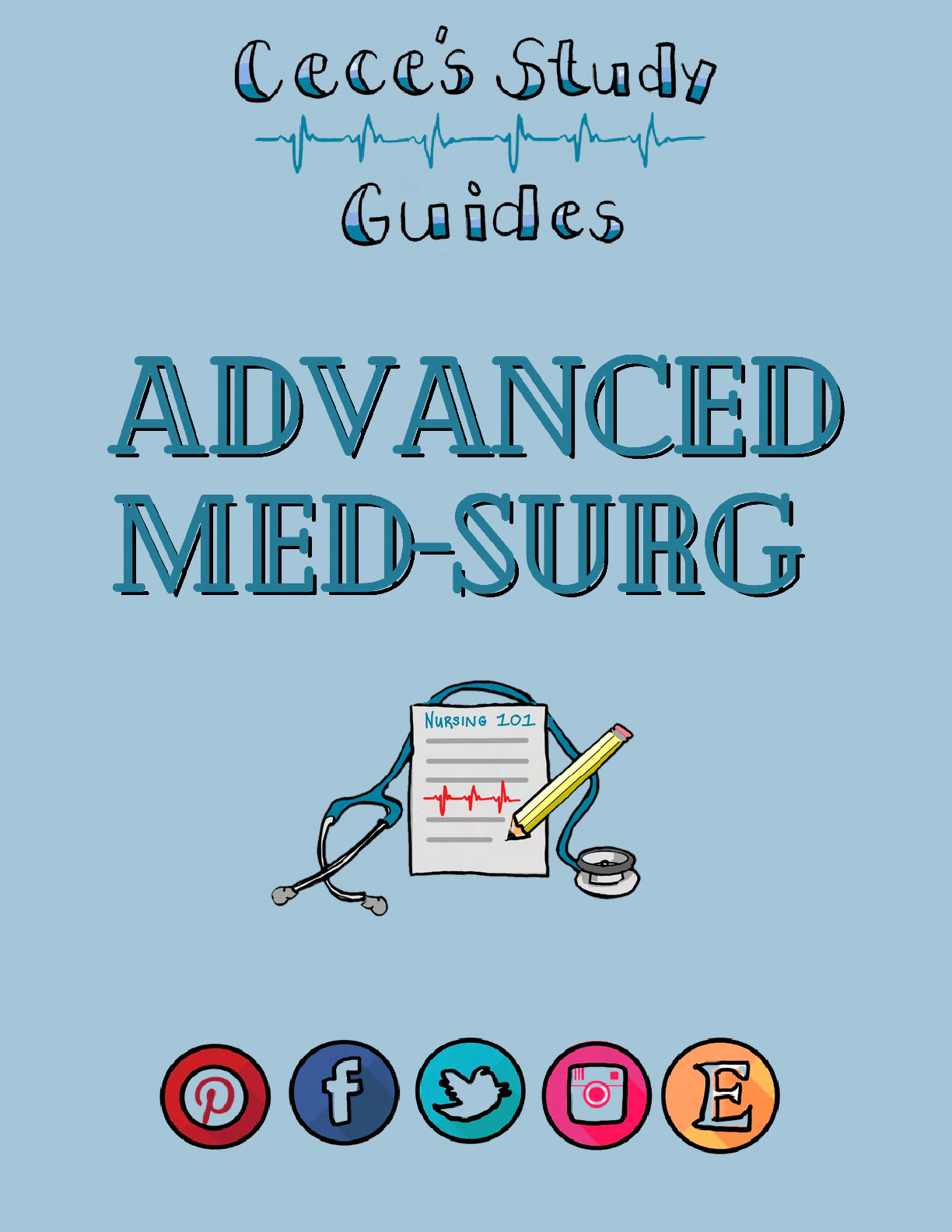*NURSING > STUDY GUIDE > NURSING 001 Chapter 19 Nutritional Concepts and Related Therapies. (All)
NURSING 001 Chapter 19 Nutritional Concepts and Related Therapies.
Document Content and Description Below
Ch 19 Nutritional Concepts and Related Therapies Wednesday pg 485-508 ch 6 box 6-4 pg 101-105/ Thursday test 508-532 and CH 22 p 676-684 Nutrition: sum of all processes involved in taking in nutrien... ts and using them to maintain body tissue and provide energy (one of the foundation of life); Good nutrition is essential for optimal health throughout all stages of life Role of the nurse in promoting nutrition: Pt look at nurse for more information ● responsible for assisting pt to eat, record intake, observe signs of poor nutrition and communicating about dietary concerns to hcp ● Nurse needs knowledge of nutrition to help pt Basic nutrition: Diet planning guides Guidelines started as farmers bulletin more than 100 yrs ago and then evolved into basic 7, basic four, the food guide pyramid,Mypyramid, and currently MyPlate MyPlate: Developed by USDA in 2011 ● Image of round plates divided into 4 different color selection ○ Vegetables, fruit, grain, protein and a seperate group dairy ● USDA suggest ppl balance calories by reducing portions; increase intake of fruit and vegetables ● Reduce amount of sodium and sugary foods in the diet Dietary guidelines for americans: the latest of these guidelines and include recommendation for the general population ● Help choose overall healthy diet ● This guide balances calories: consuming more fruits, vegetables, whole grains, increasing fat-free or low-fat dairy and seafood; consuming low sodium, saturated fat, trans fat, cholesterol, added sugars, and refined grains ● Dietary guidelines for americans affects: food stamps, WIC, school breakfast and lunch programs ○ The government developed these guidelines to address adequate nutrition, avoid overnutrition and chronic disease Dietary Reference intakes (DRI): refers to a set of nutrients based values that serve for both assessing and planning diet ● DRI replace and expand on recommended dietary allowance (RDA) have been around for more than 50 years ● Purpose of the DRI is to help provide individuals optimize their health, prevent disease, and avoid consuming too much of a nutrient Essential nutrients: Basic functions A nutrient: a chemical compound or element in food that is necessary for good health Essential nutrient: nutrients that the body cannot make in the amounts essential for good health; therefore, it is necessary to obtain these nutrients through a diet ○ 6 classes of essential nutrients: carbohydrates, fats, proteins, vitamins, minerals, and water ○ Each necessary for life ○ 3 major functions of nutrients: 1) providing energy 2) building and repairing tissue 3) regulating body processes Providing energy ● Kilocalorie(kcal): is a measurement of energy, much as a pound is measured in weight ○ The more kcal a food has the more energy it will provide ● Of the 6 essential nutrients only 3 provide energy: carbohydrate, fats, and proteins ○ Carbs and proteins provide approximately 4 kcal/g, Fats provide 9 kcal/g, Alcohol supplies 7 kcal/g ● Caloric distribution: Obtain 45-65% of daily kcal from carbs, 20-35% from fats, 10-35% from protein Building and repairing tissue ● Protein is the nutrient that places the most important role in building and repairing ○ It contains amino acids ● Calcium and phosphorus are minerals that are necessary nutrients in bone structure, iron, another mineral makes up a large part of hemoglobin in RBC Regulating body processes ● Metabolism: combination of all chemical processes that take place in living organisms ○ Processes of building up and breaking down tissue ○ Nutrients play a role in metabolism and help regulate certain body processes ■ The presence of carbs is required for fat to be used correctly ■ Vitamin B are necessary for the body to derive energy from food ■ Water is an integral part of almost all chemical reactions in the body ● By studying how the body uses nutrients scientist have found 2 important facts ○ Individual nutrients have many functions in the body ○ No nutrient works alone Carbohydrate: organic compounds containing carbon, hydrogen, and oxygen ● Main function to provide energy ● Also needed in adequate amounts to keep protein from being used as energy ● Made up of saccharides (sugar units) ● Classified as simple or complex carbohydrates ○ Simple carbohydrates: include monosaccharides and disaccharides ■ Monosaccharides have one unit of sugar require no digestion ■ Fructose (monosaccharide) found in fruits and glucose (blood sugar) ■ Disaccharides are made up of two sugar units bonded together ● Once they go into the body hydrolysis breaks them down into monosaccharides ● Ex. table sugar (sucrose) and milk (lactose) ● DRIs relating to carbohydrates indicates that 45%-65% of adult calories should be a form of carbohydrates ○ Added sugar should be no more than 8% (40g) ○ Simple sugars are found in milk and fruits ● Complex carbohydrates: polysaccharides made of long chains of glucose units ○ All break down into simple sugars when digested ○ 3 types of complex carbohydrate are ■ Starch- found in plant foods such as grains, legumes, and vegetables (breaks down more slowly b/c its larger ■ Glycogen: (animal starch) made of simple sugars, stored in liver used when body glucose is low ■ Dietary fiber: humans cannot digest, fiber consumed secreted in feces has no nutritional value ● It can lower cholesterol and blood glucose level and assist in weight loss ● Insoluble fiber: found in wheat bran, vegetables, whole grains and some fibrous fruit ● Water-soluble fiber: fruits, oats, barley, and legumes Daily requirements of Carbohydrates ● Fiber intake 21 and 38g/day ● MyPlate recommends increasing fruits and vegetables, and consuming at least half of grains as whole grains NOT refined ● Increase in fiber can cause gas, bloating and constipation, too much can lead to osteoporosis and anemia ● 8 glasses of water per day Digestion and metabolism of carbohydrates All carbohydrates broken down in digestive tract into monosaccharides before absorbed and converted to glucose except fibers ● Extra carbohydrates are stored as glycogen Fats (lipids): organic substances of a fatty nature that are insoluble in water and necessary for good health ○ Both fats and cholesterol are lipids ● They provide the most concentrated source of energy of all nutrients; need 9 kcal/g ● Dietary fats provide Satiety (a feeling of fullness and satisfaction from food) ○ Adds aroma to foods and provides the body with essential fatty linoleic acids and linolenic acid ○ Dietary fats also carry fat soluble vitamins: A,D,E, and K ● Composed of carbon, hydrogen and oxygen just like carbohydrates ● Lipids also contain fatty acid and glycerol; b/c of this they may be called glycerides or triglyceride ○ Fatty acids are the building blocks of fat ● Classified as either saturated or unsaturated ○ Saturated fatty acid: chemical bonds are completely filled or saturated with hydrogen ■ Are generally of animal origin and solid at room temp ■ Have a long shelf life because the fat is strong so it takes long to spoil ■ Tend to increase blood cholesterol, increasing the risk of atherosclerosis ■ 7% of total daily calories ○ Unsaturated fatty acid: one or more places where hydrogen is missing on its chemical chain (called points of unsaturation) ■ A fatty acid with only one point of unsaturation is called monounsaturated fatty acid ■ Fatty acids with 2 or more points of unsaturated fats are polyunsaturated Fatty acid class Food contributing significant amounts to the diet Saturated Coconut, palm and palm kernel oils Fat in and on meats and poultry Egg yolk, butter, cream, milk fat, cocoa butter, olive oil,olives Monounsaturated Canola oil, peanuts and peanut oil Most other nuts avocados Polyunsaturated Safflower oil, sunflower oil,cottonseed oil, soybean, corn oil fish oil Trans Partially hydrogenated plant and fish oil, stick margins, shortening, commercial fats used for frying, baking [Show More]
Last updated: 1 year ago
Preview 1 out of 31 pages
Instant download
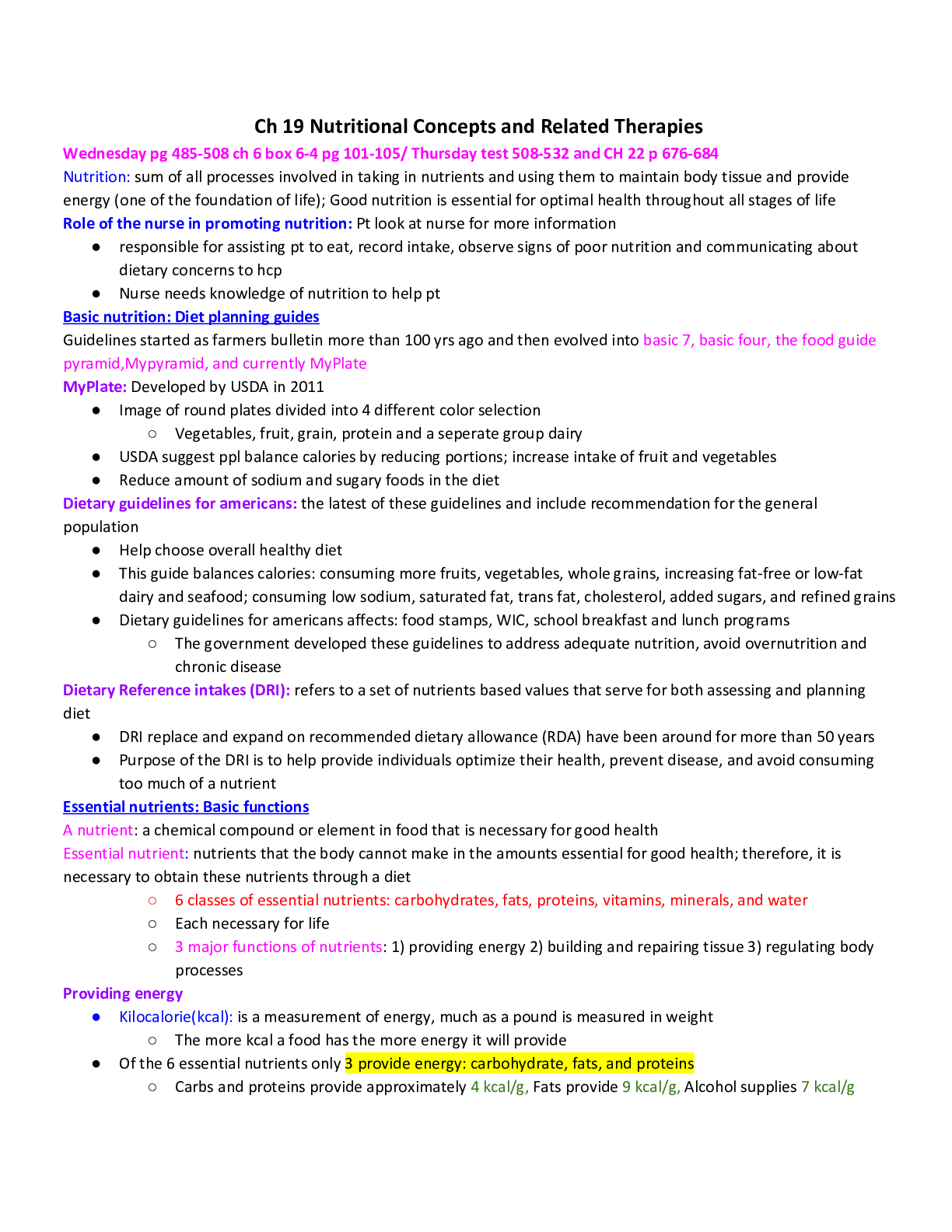
Instant download
Reviews( 0 )
Document information
Connected school, study & course
About the document
Uploaded On
Oct 01, 2021
Number of pages
31
Written in
Additional information
This document has been written for:
Uploaded
Oct 01, 2021
Downloads
0
Views
181

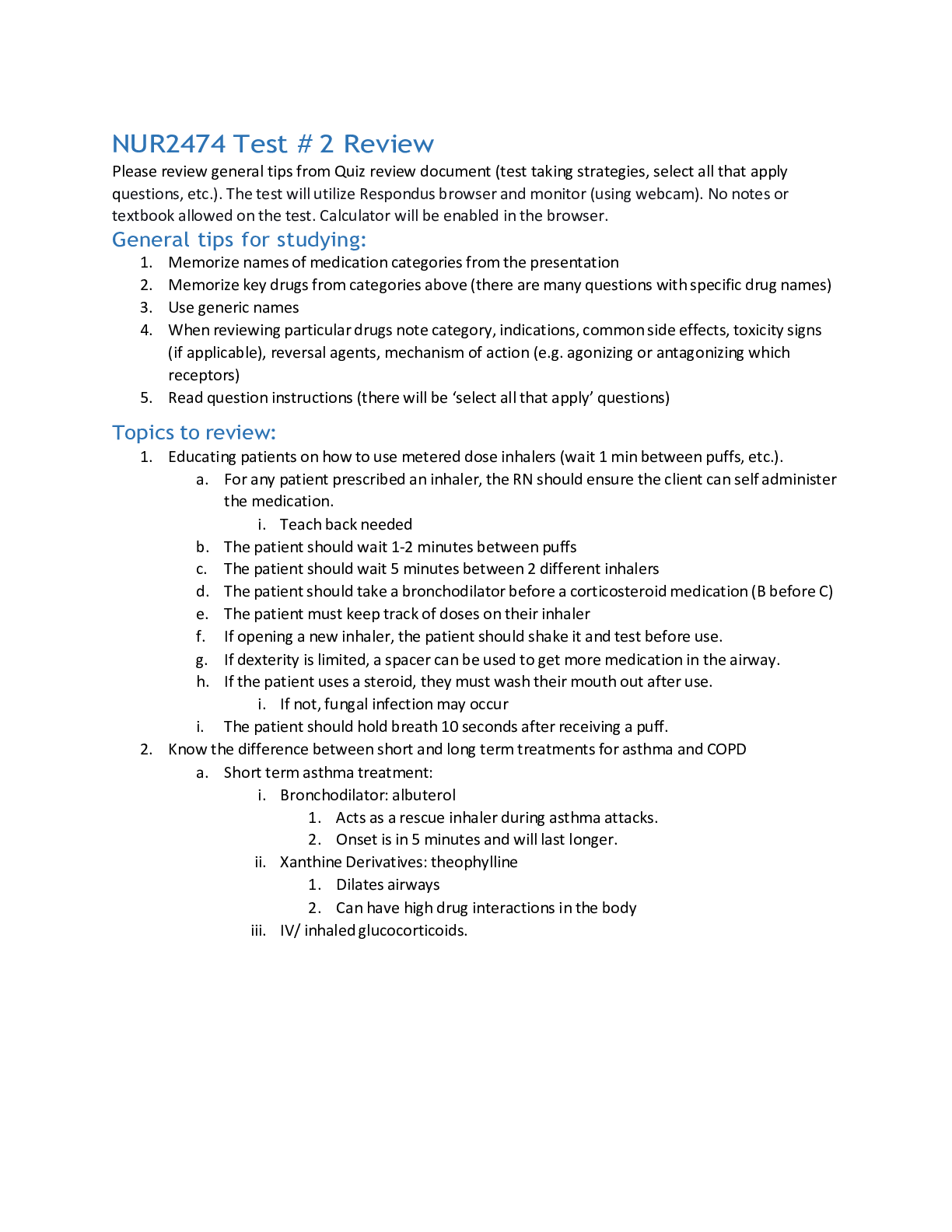
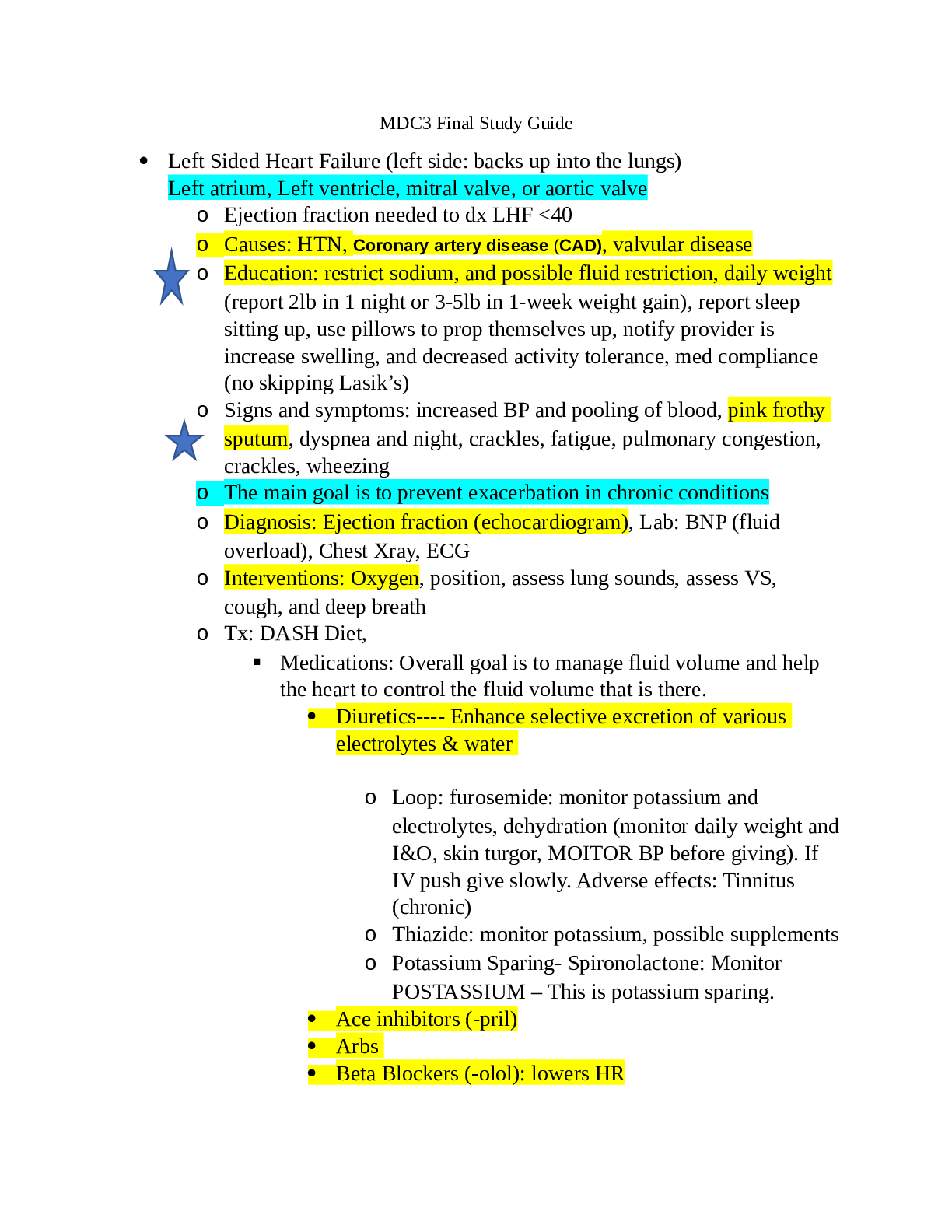
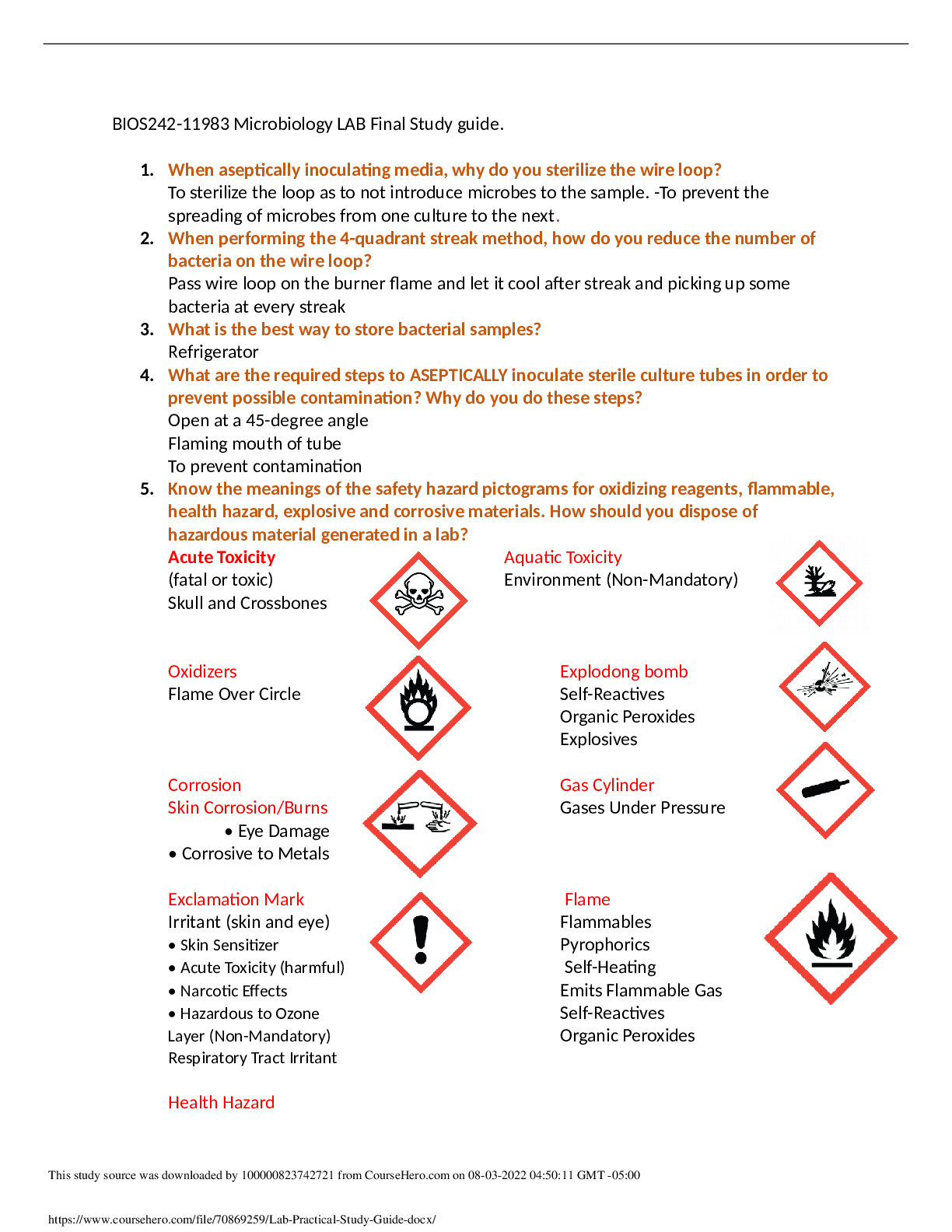

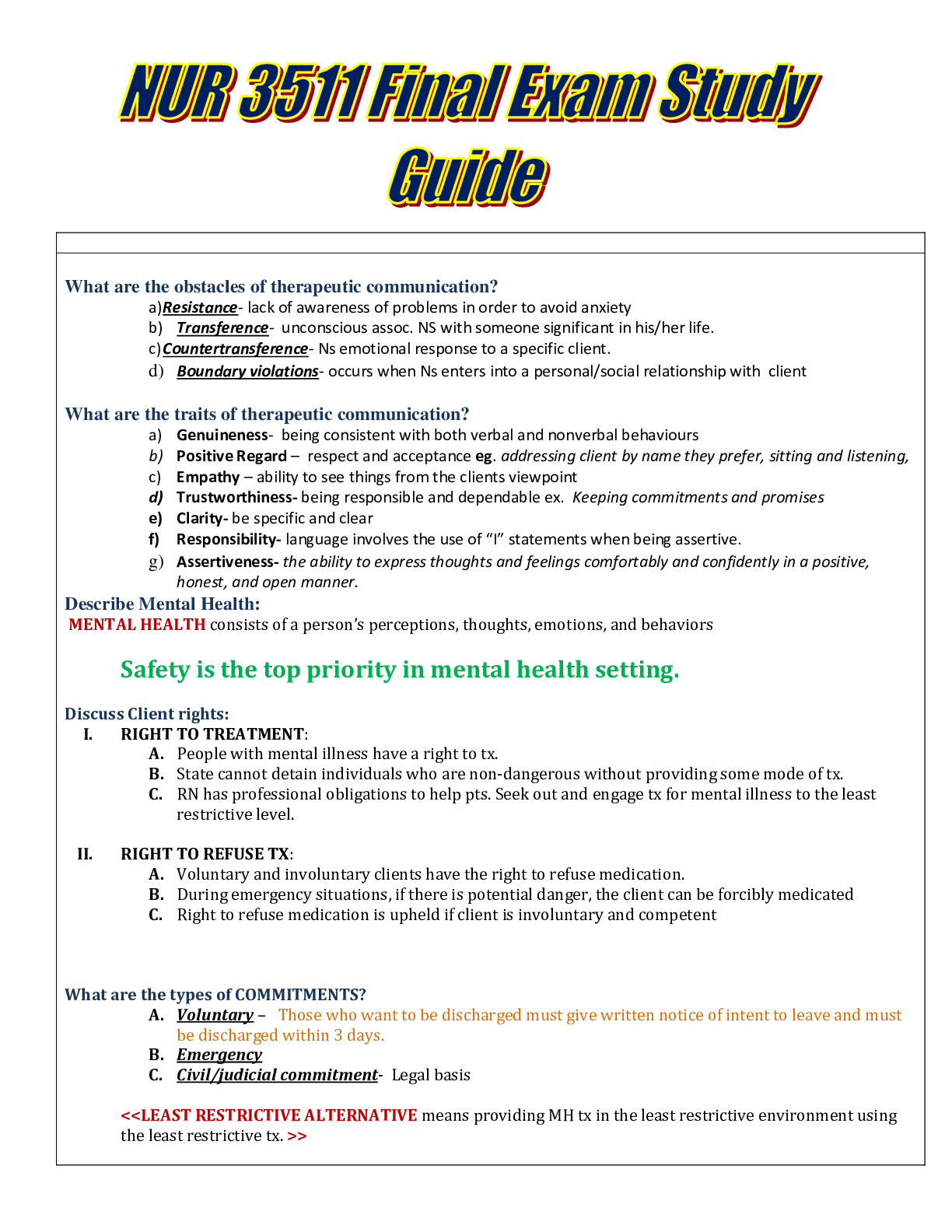
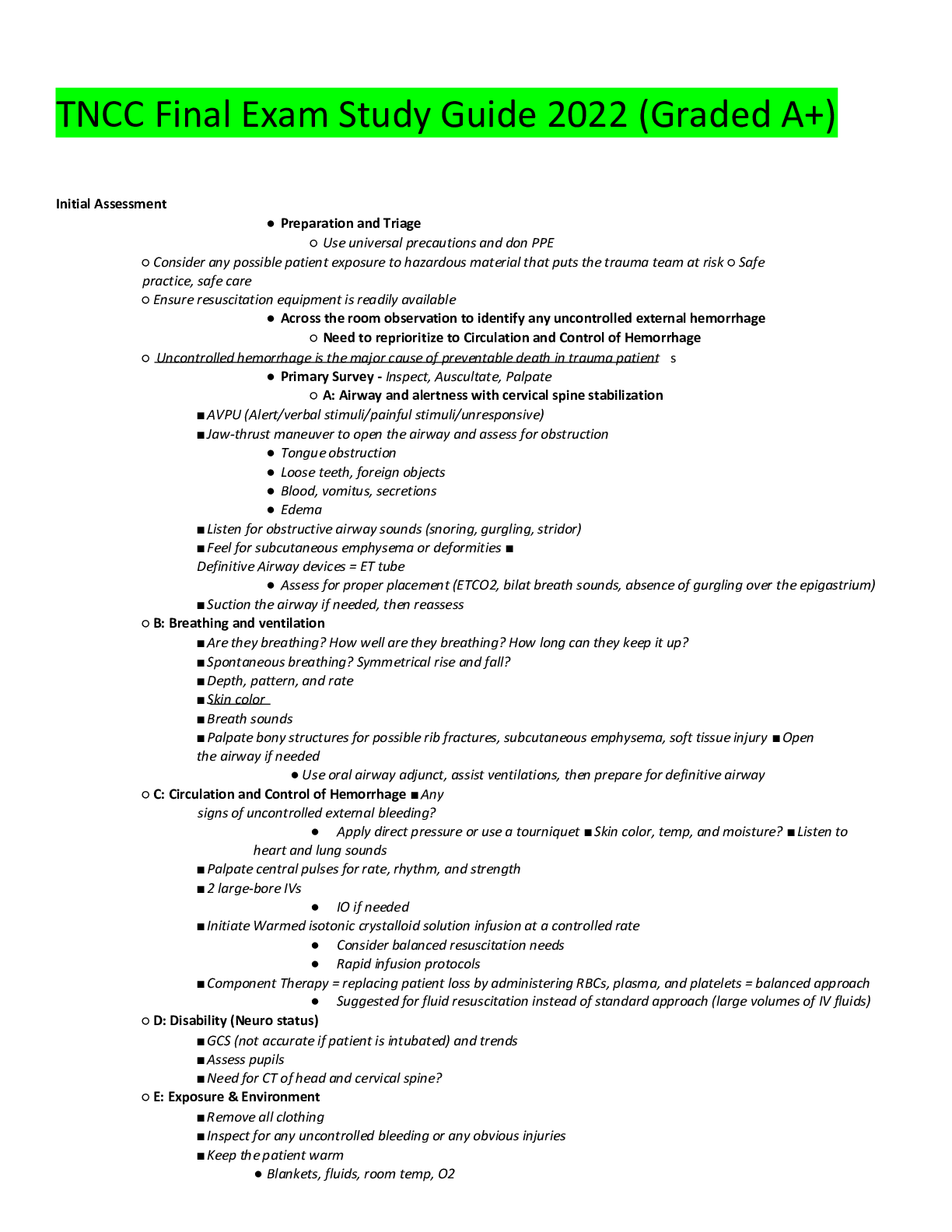
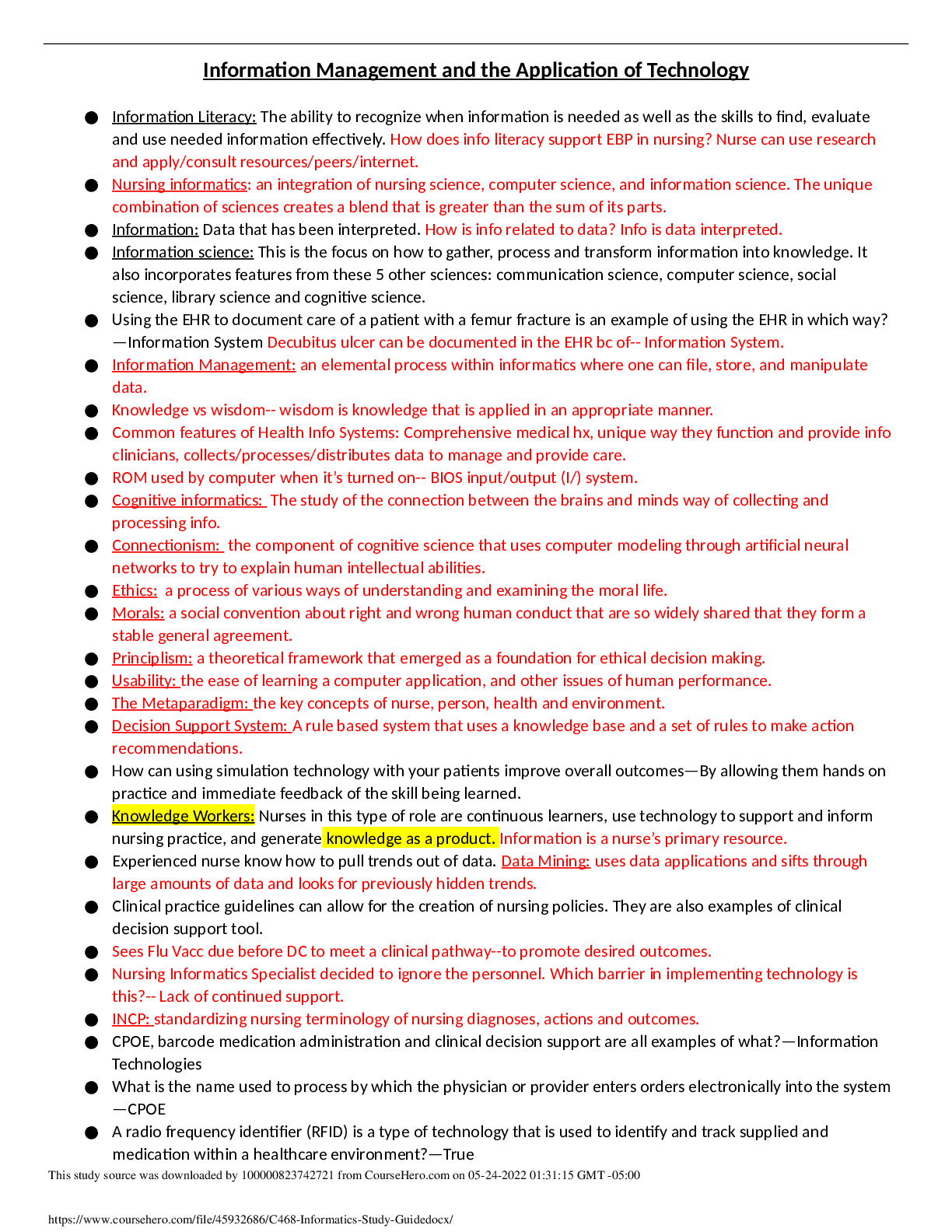
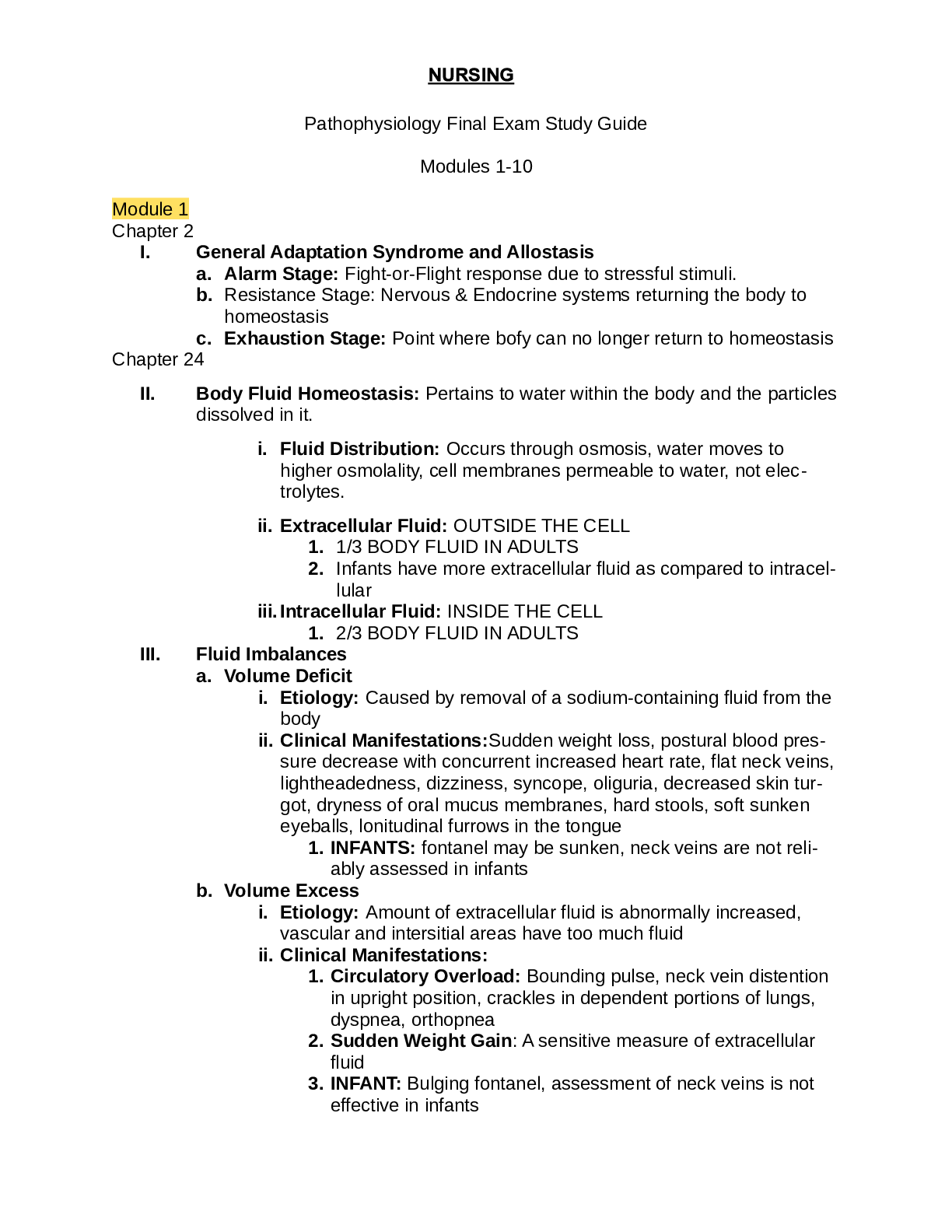
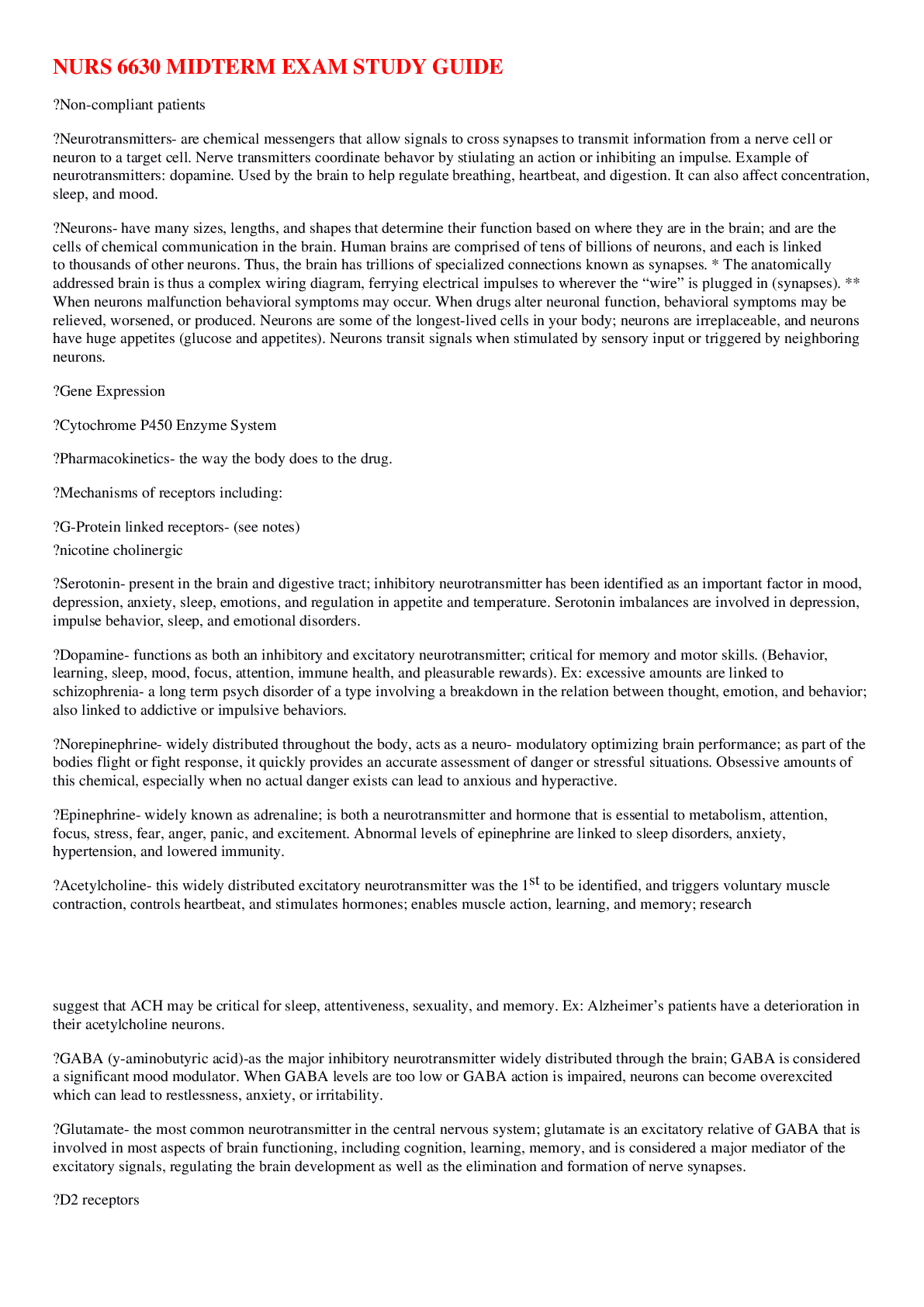
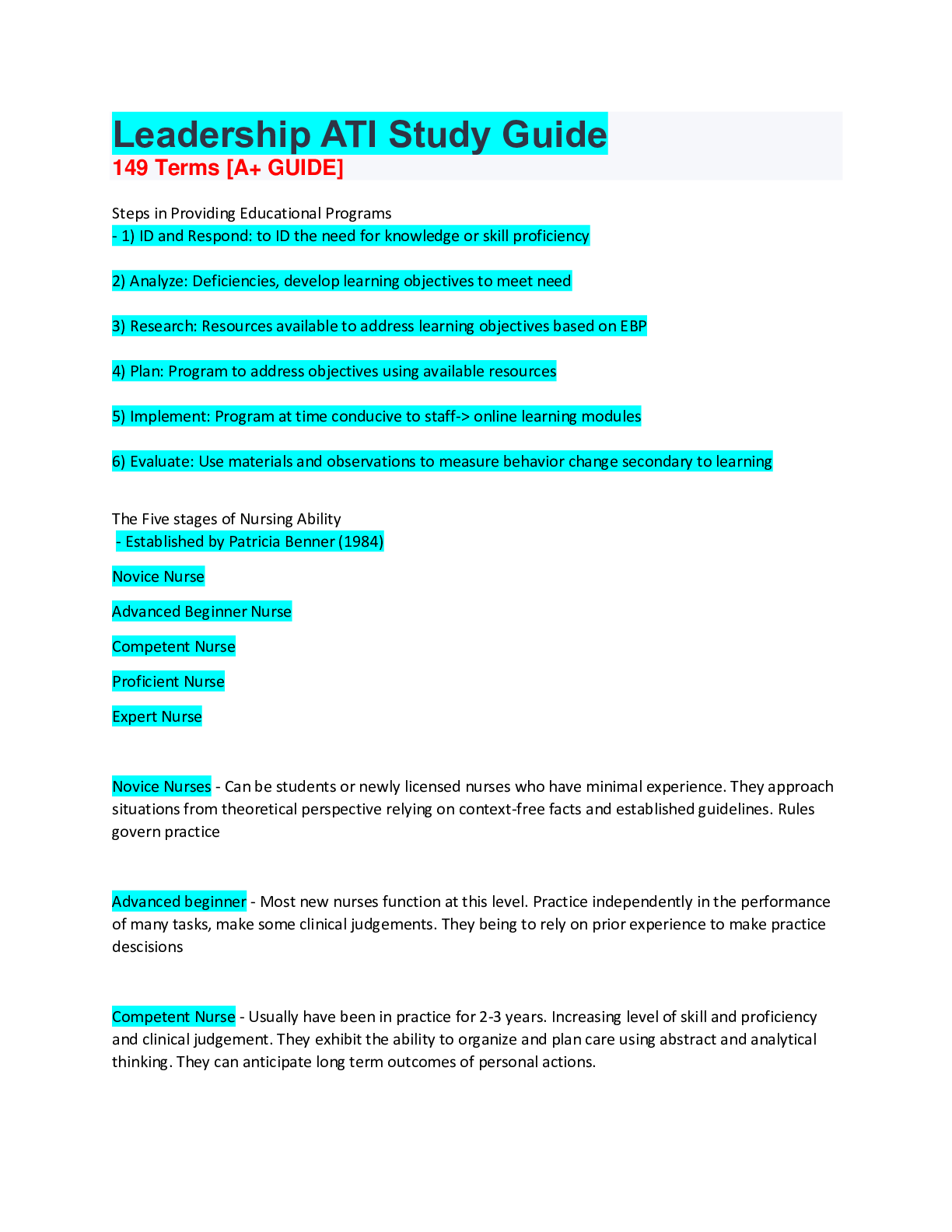
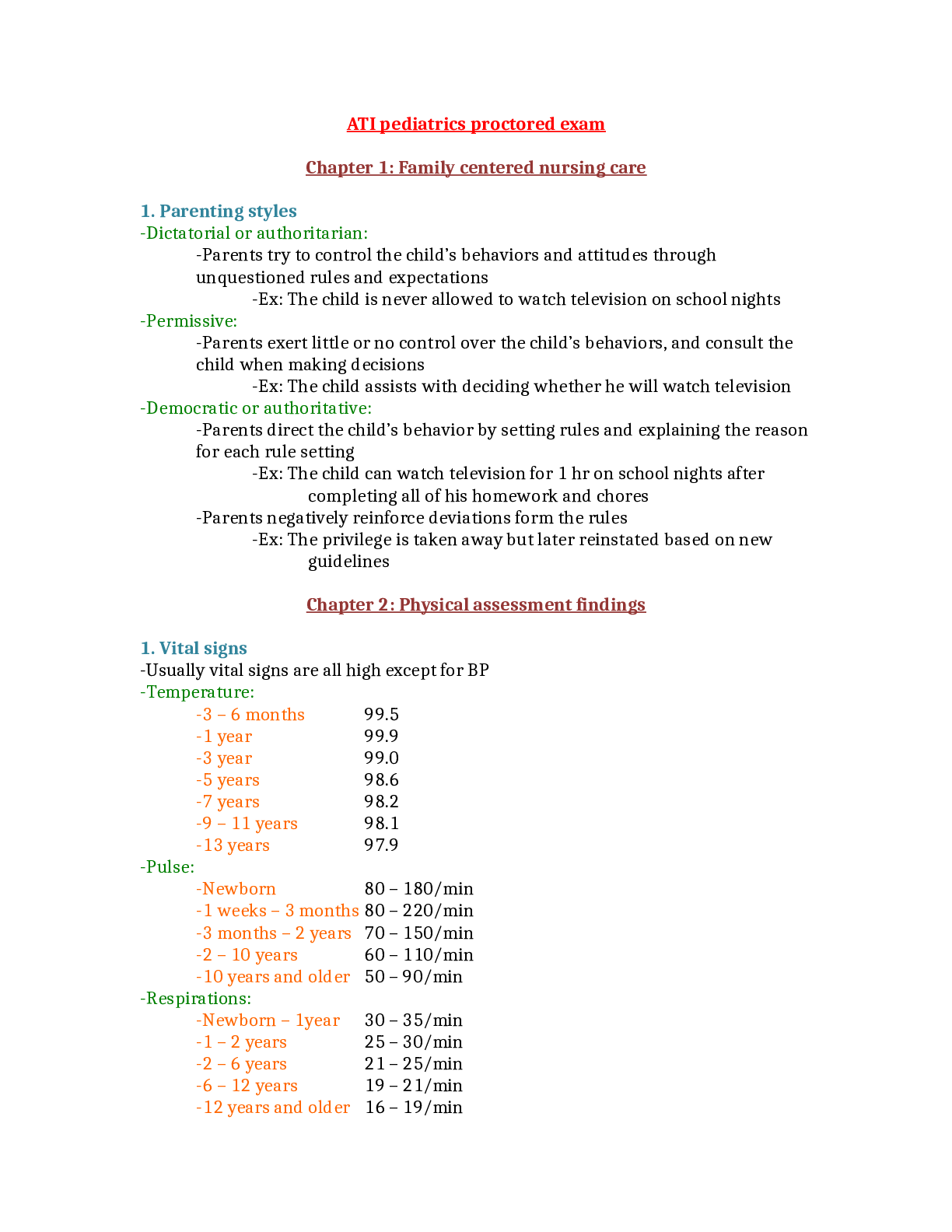
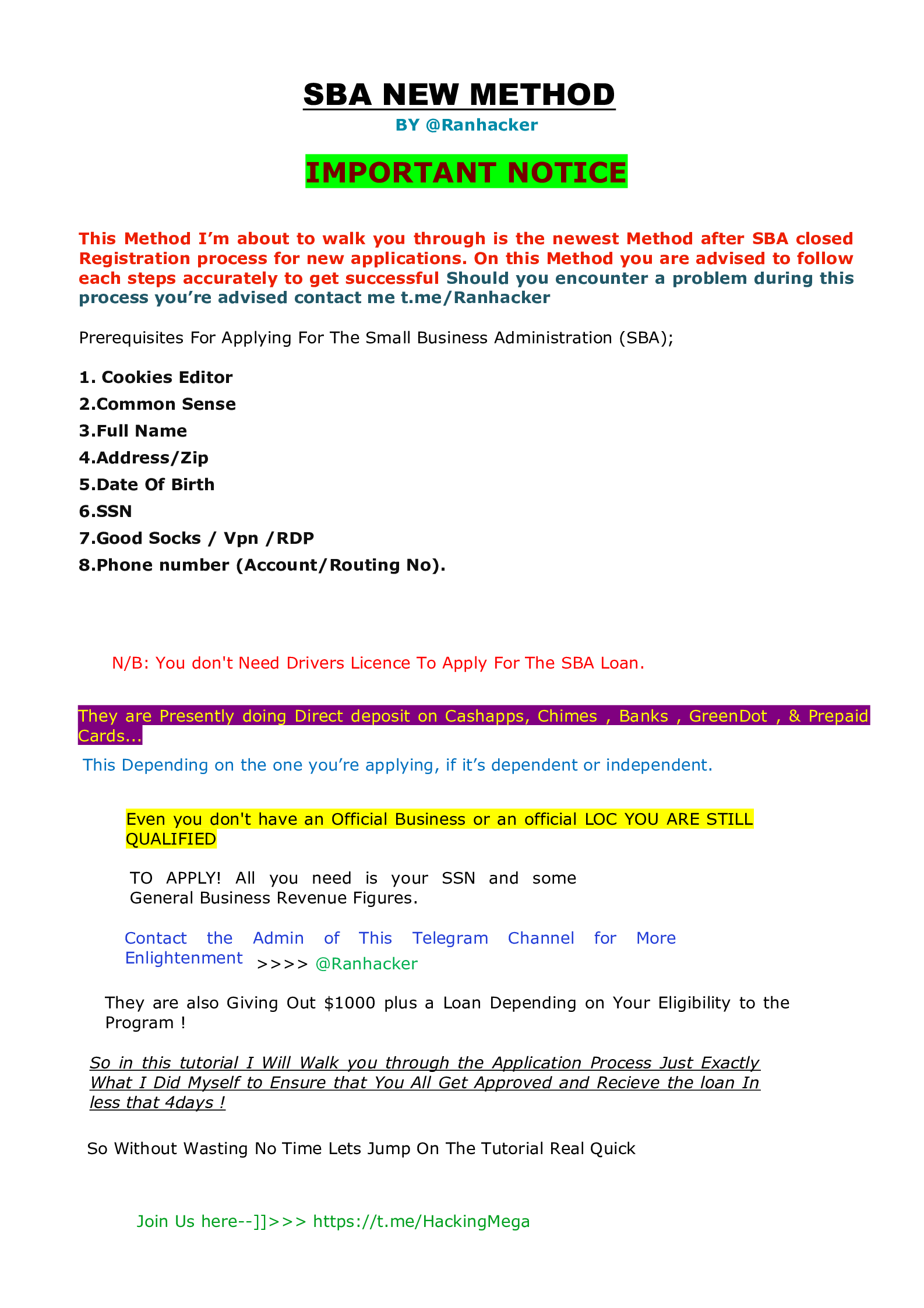
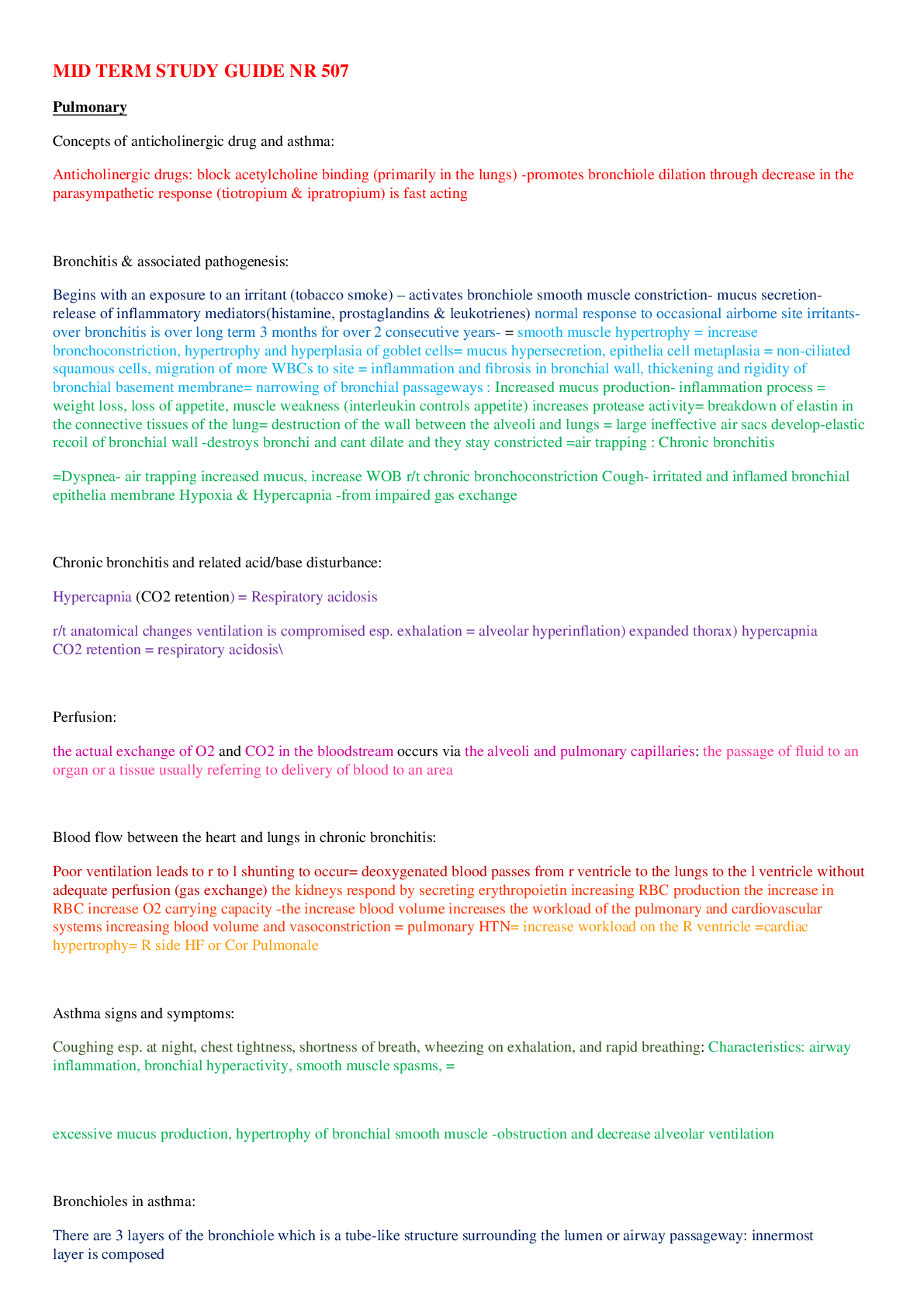


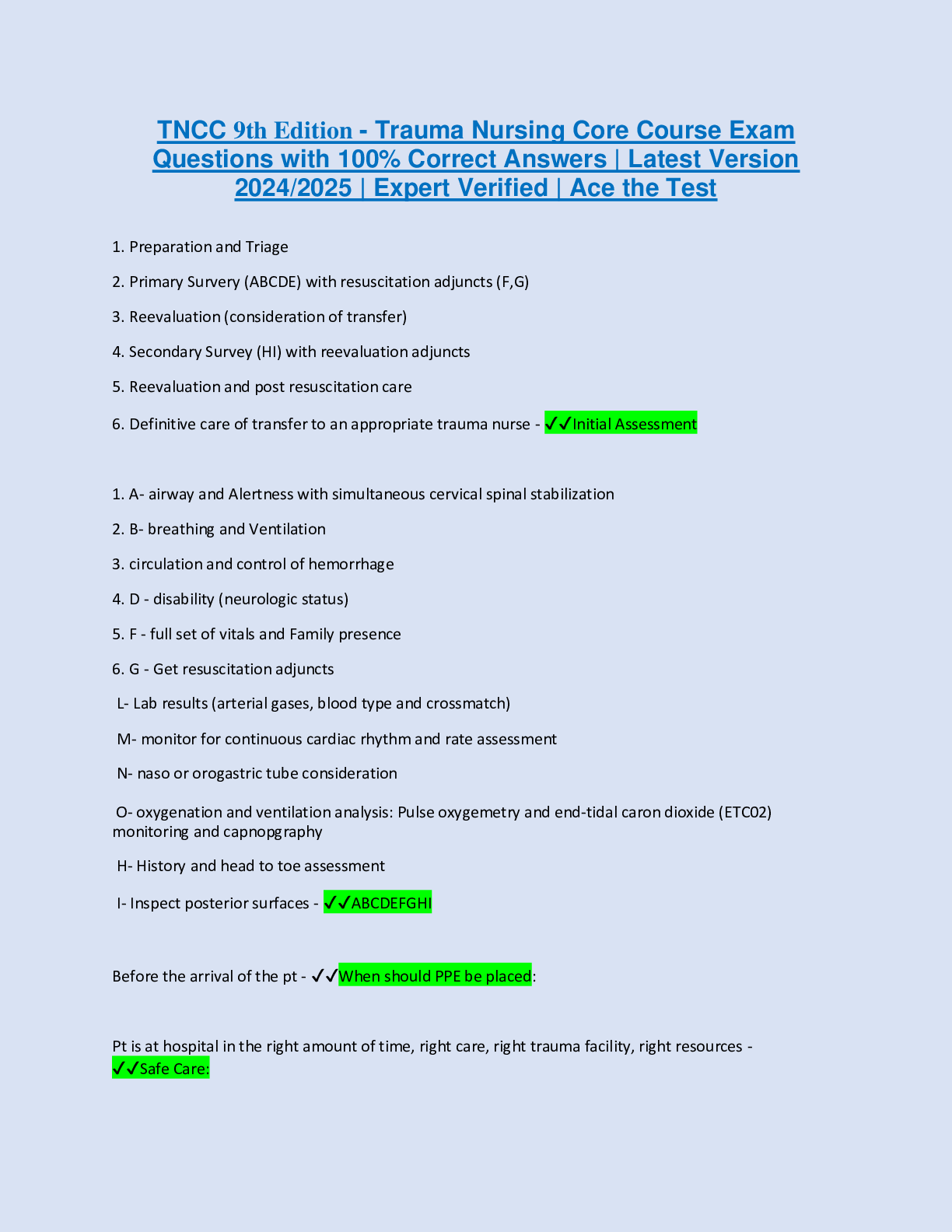








.png)

